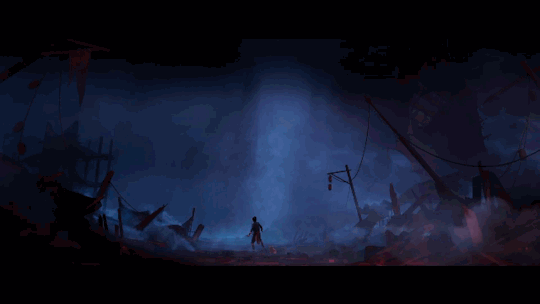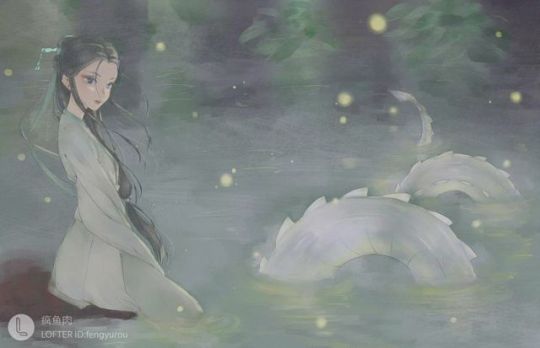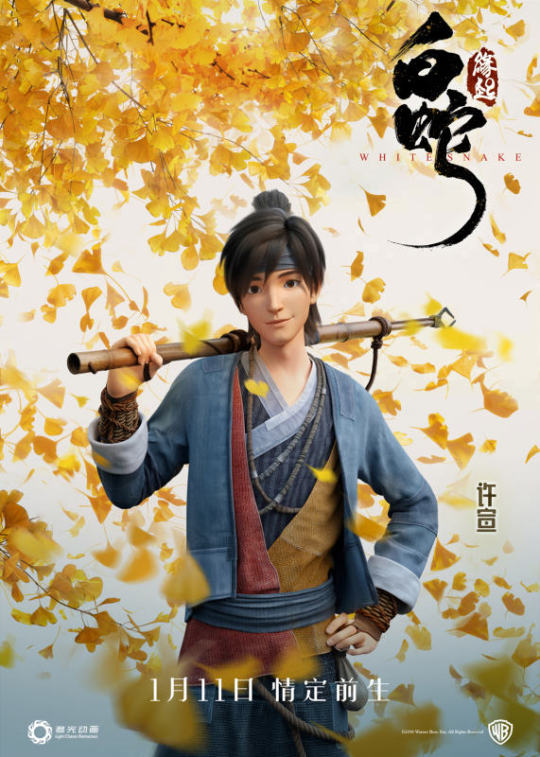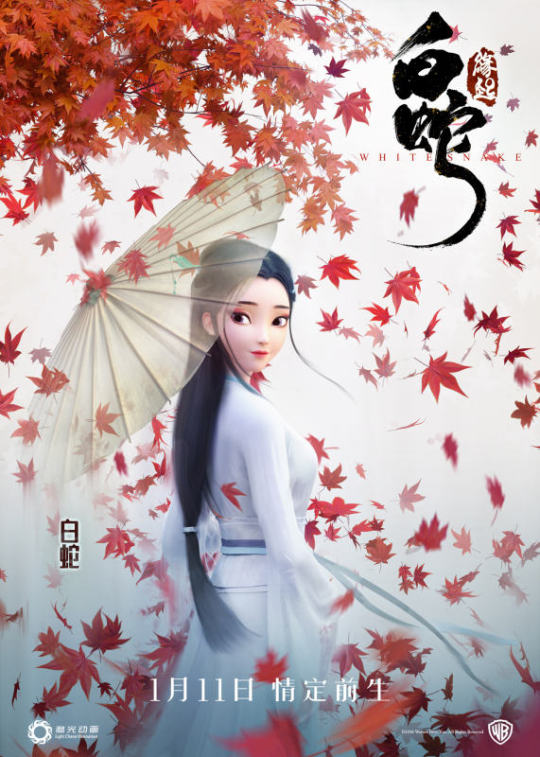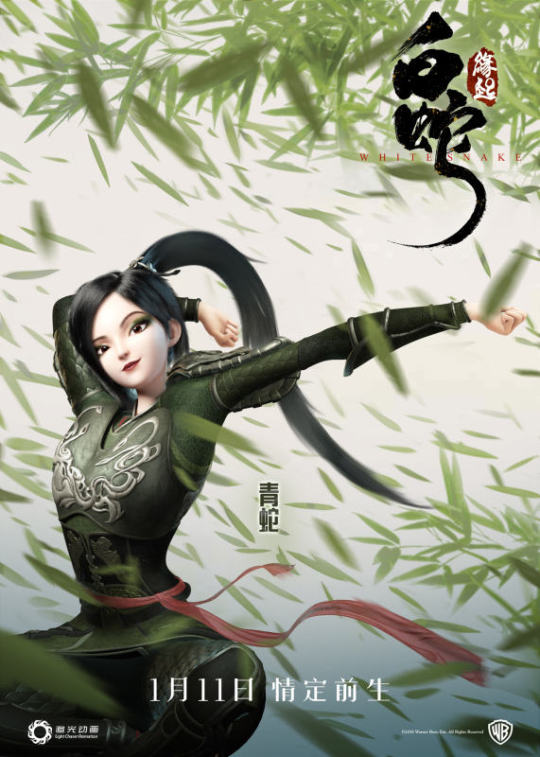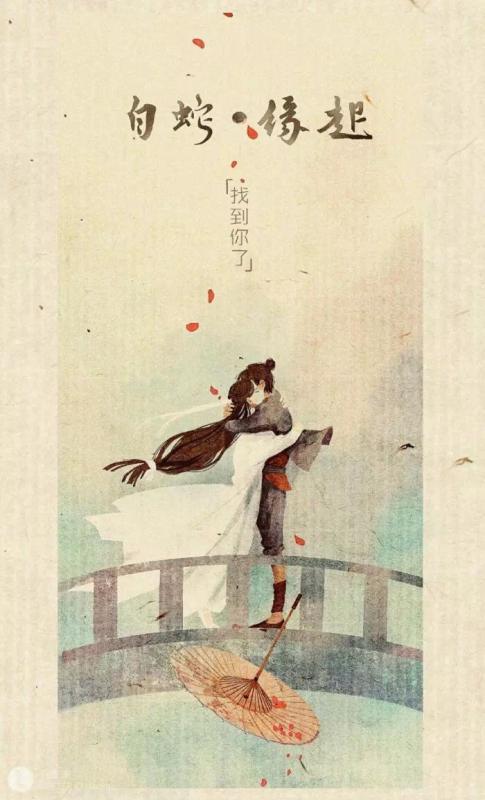About White Snake film, also partly about Chinese folktales.
Don't wanna be here? Send us removal request.
Text
Mythology behind White Snake: Cultivation and transcendence
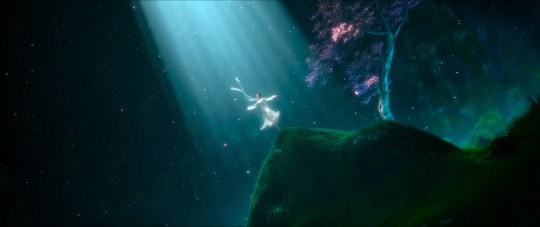
Xiao-Bai was on her way to immortality.
仙 (Xian, Immortal), in a narrow sense, means ‘a immortal being’. In Chinese folklore, Xian play the similar roles as the deities in a polytheistic mythology except two major differences: first, Xian doesn't necessarily control some part of the world (in other words, Xian don’t have their own divine domains); second, all Xian were transcendent mortal beings.
In early ages, Xian were often depicted as some mysterious immortal hermits who lived in the isolated mountains or islands and kept the secret of universe and immorality. At that time, people believed that a mortal being could transcend into Heaven and become a Xian by taking some magical portions (the elixir of life). As a result, unlike their colleagues in Greco-Roman Egypt who centered on the transmutation of base metals into noble metals, the early Chinese alchemists focused on seeking the elixir of life.
Around the 2nd century, the belief system of Chinese alchemists gradually merged with the philosophy of Tao and developed into the religion of Taoism. And achieving immortality became one of the main goals of Taoism. During this period, the imagination of immortals became more colorful and tempting. It said that immortals were immune to fire and ice, didn’t need to eat or drink, could use magic and could fly without a fluttering motion as if they were riding on wind.
Later, around 4 or 5th century, after absolving some idea of traditional Chinese medicine, Taoism developed a new theory of achieving immortality called Neidan (Inner Alchemy). Unlike traditional alchemy theory (External Alchemy), Neidan theory tried to create the elixir of life or an immortal spiritual body with the principles of traditional medicine. Ancient Neidan participants believed that they could prolong their lives and achieve immortality by cultivating and transforming three essential energies sustaining human life: Jing (essence), Qi (breath or vitality), Shen (spirit or soul). Naturally, they failed, however the idea of cultivating life energies to achieve greater power and even immortality became a very important part of Chinese folktales. Nowadays, the magical Chi in modern popular culture and the cultivation mentioned in Chinese Xianxia story all can be traced back to Neidan theory.
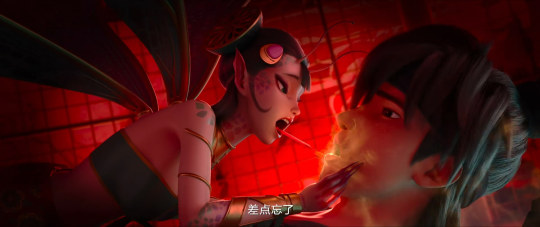
Xuan traded his essence with an opportunity to become a demon, which meant that he could never cultivate magic power, or achieve immortality.
Obstacles
Since in Chinese folklore the circle of life and death is part of the natural order (in other words, the Way of Heaven), achieving immortality is naturally considered to be a Heaven-defying behavior. Hence, folktales believe that the fate would set some sort of obstacles for those who sought immortality, and only those who passed through the obstacles could achieve immortality. In folktales, those obstacles are called ‘劫’ (Jie, doom or trail). Although, in modern Chinese pop culture, Jie is always described to be a direct and violent event, such as a series of violent lightning bolts or an unstoppable fire, Jie could take many forms in Chinese folktales and may not necessarily be lethal or even noticeable. But if the victim fails, it would always ruin the opportunity to achieve immortality once for all.
The movie adapted this idea in a very interesting way. The beginning scene of White Snake showed an often mentioned obstacle in Chinese folktales —— the Trail of Love. It basically means that the one who seeks immortality would fall for someone which would make him/her choose between the immortal life in Heaven and the life with his/her lover in the mortal world. And this is why, at the end of movie, Xiao-Qing asked Xiao-Bai that whether it was worth to give up her five hundred years’ effort.

Although she lost her memory, in her subconscious, she still felt that there was something she was longing for, and this idea became her undoing.
112 notes
·
View notes
Video
youtube
English lyrics
The moon has its changes, just like your hair ends. The knot, at this night every year, is softly tangling. Want to ask you how much do you remember, The unfettered life once we had? The Longing is everlasting, yet without regret. The flowers go with wind, the meadow speads endlessly, The world is clear and bright. I, like a small boat, have not place to moor. You were singing a millennial old ballad when I dreamed about this day. The shadows are swaying in the candlelight. The bustle of the world I no longer care. If the ice freezes up, the hairpin drops again, I will hold you tight this time. Suddenly you look back with a light simle, my heartstrings can no longer cease anymore. Facing trials and hardships, as long as I have you is enough. The landscape is easy to change, But the oath is inscribed unfablable. Our fate starts but never ends. Though mountains and long roads, we will meet in another life.
I have stayed in Er Mei Mountain for a thousand years, just for meeting you at the Broken Bridge. The sunset in West lake is shining on my white dress. The spring is gone, but she will be back again. The cherries have turned red, the plantains have turned green. The time flies so fast, that feelings might not catch up. Once we meet, let's not depart, not left one to mourn anymore. Suddenly you look back with a light simle, the heartstrings can no longer cease. Facing trials and hardships, as long as I have you is enough. The landscape is easy to change, But the oath is inscribed. Our fate starts but never ends. Though mountains and long roads, we will meet in another life. Though mountains and long roads, we will meet in another life.
1 note
·
View note
Text
Mythology behind White Snake: Crane and Snake
As you might have noticed, there are lots of crane bird symbols in the design of Tao antagonists.
Such as the pattern on the sails of Taoist’s fleet.
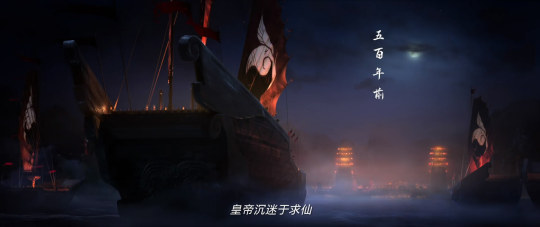
The young Taoist’s magic,
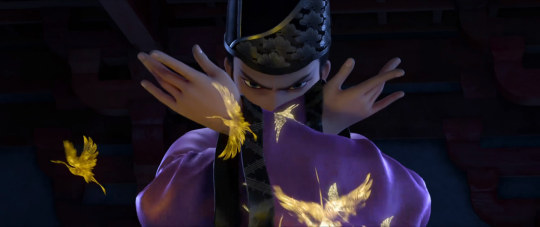
The crane wing-like back flags of horsemen (though many audiences complained it looked like Polish winged hussars)
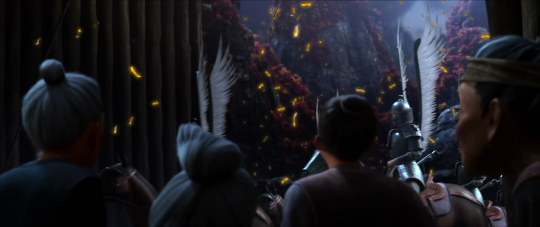
In Taoism and Chinese folklore, crane is considered to be the sacred bird. It’s a symbol of nobility and longevity. And among all crane birds, the so-called red-crowned crane is the most sacred one. In many folktales and paintings, immortals are often depicted riding on red-crowned cranes or complaining by red-crowned cranes. Due to this association, red-crowned cranes are also called “仙鹤” (Xian-He, “immortal crane”).
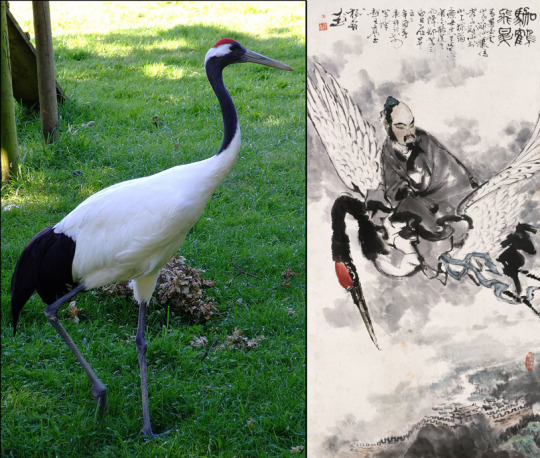
The red-crowned crane in real life and in traditional Chinese painting
Crane (along with some raptors) is also considered to be the natural enemy of snakes in Chinese culture. As you can see in movie, the High Taoist conjured a grey crane to fight with Snake Master, and when Xiao Bai shredded the grey crane, he conjured a magical red-crowned crane (the most sacred crane) to continue the battle and eventually captured Xiao Bai and Snake Master.
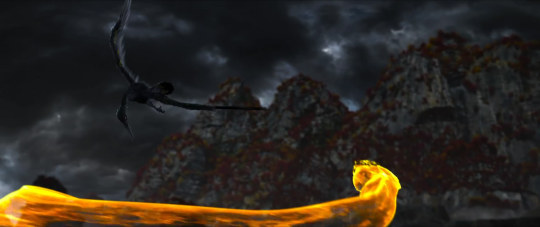
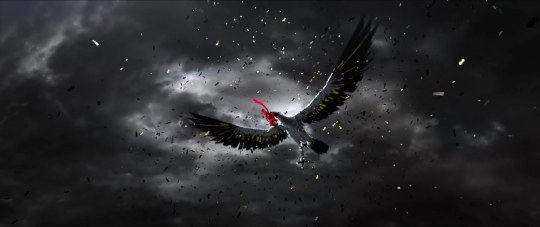
Snake
After drained young Taoist’s magic, Xiao Bai basically went into an overdrive mode. She gained too much magic and couldn’t maintain her human form anymore. Hence, she turned into her natural form —— the white snake. However, at this point, she was not a normal snake anymore.
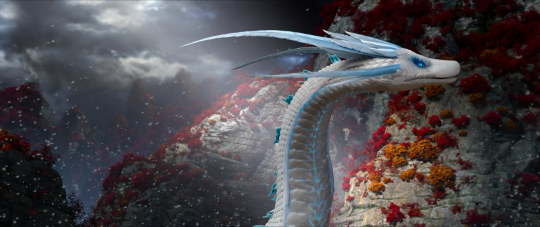
In Chinese folklore, snake is sometimes called “小龙” (Xiao Long, “the little dragon”). This nickname is mostly due to the similarity between snake and mythical Chinese dragon. Some folktales also believe that a snake will eventually grow into a dragon, if it can live long enough, or become powerful enough (in Chinese mythology, the longer a creature lives, the more powerful it becomes). Apparently, this idea was adopted by White Snake movie. after drained the magic power of young Taoist, the true form of Xiao Bai began to show the characteristics of Chinese dragon, including the iconic horns and long eyelashes. (Yes, Chinese dragon has long eyelashes.)
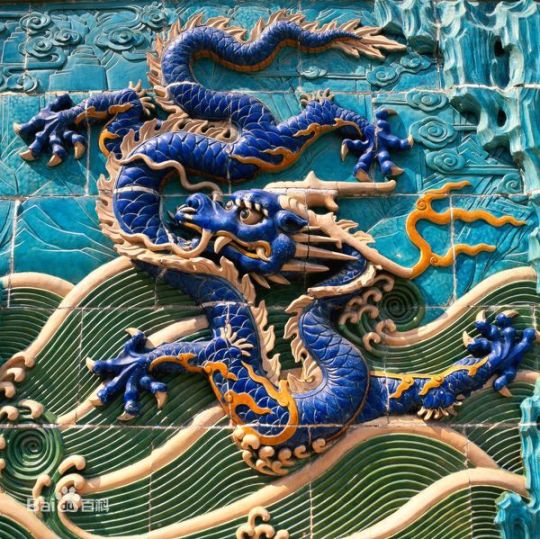
Dragon on the Nine-Dragon Wall at the Forbidden City, in Beijing. Note the eyelashes
255 notes
·
View notes
Photo
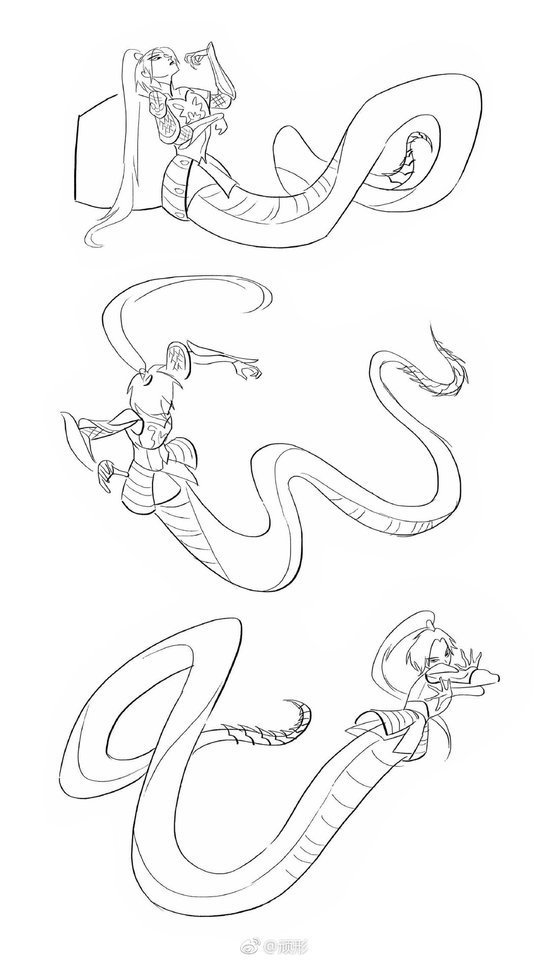

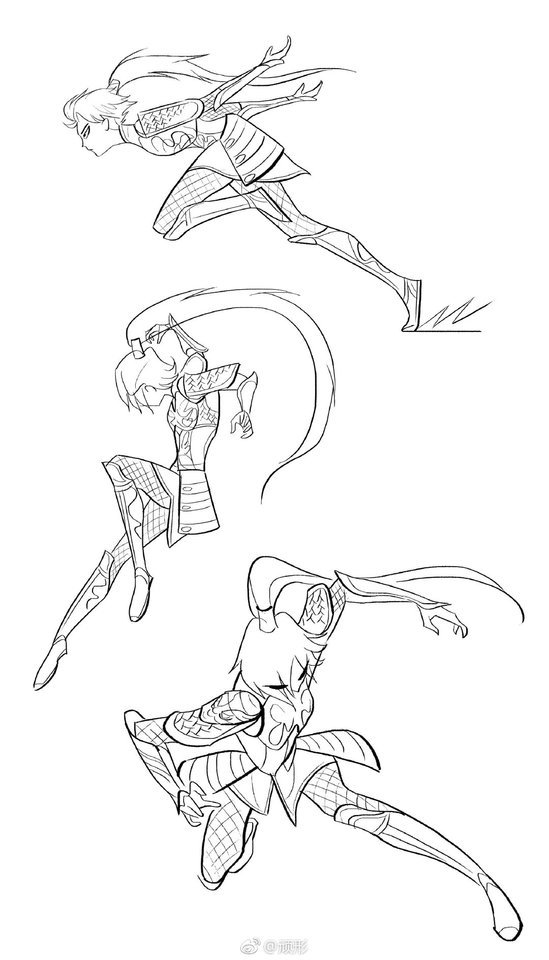
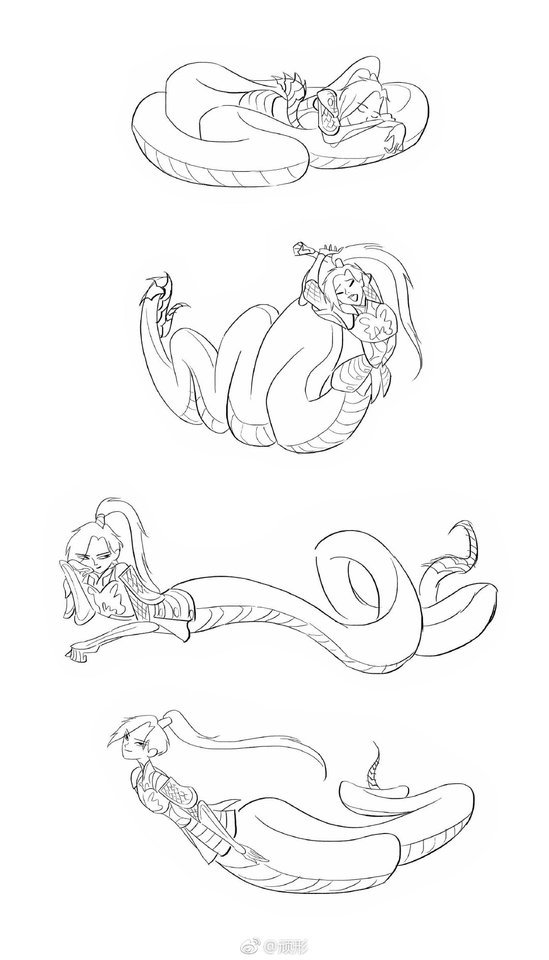
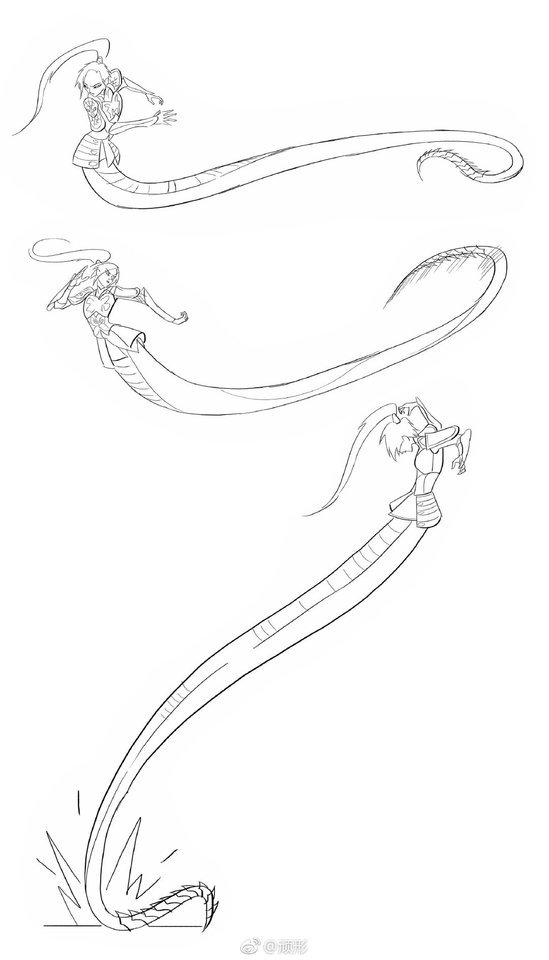
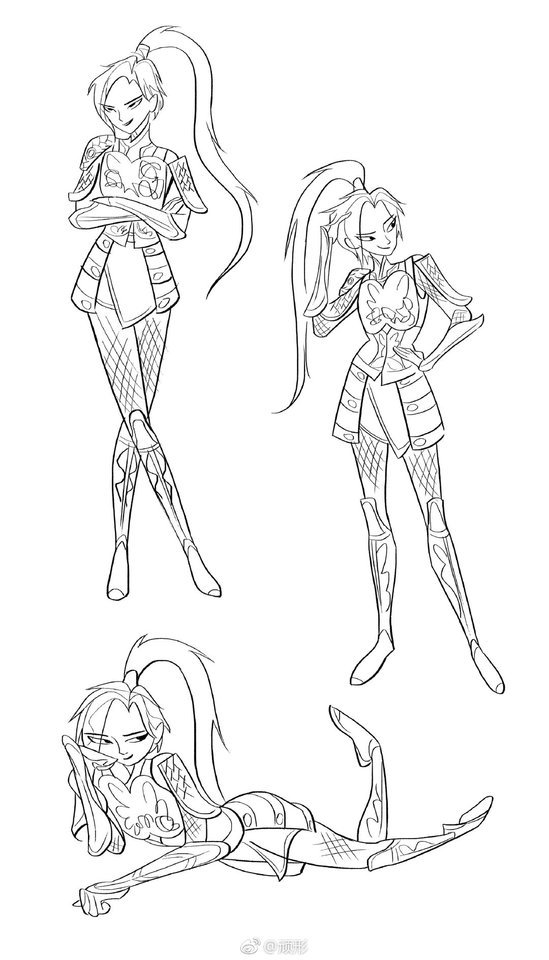
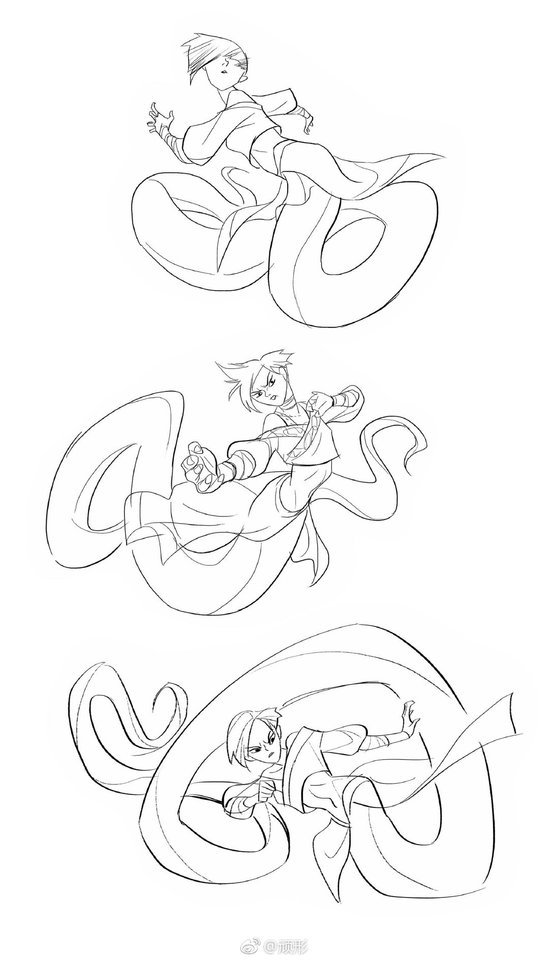
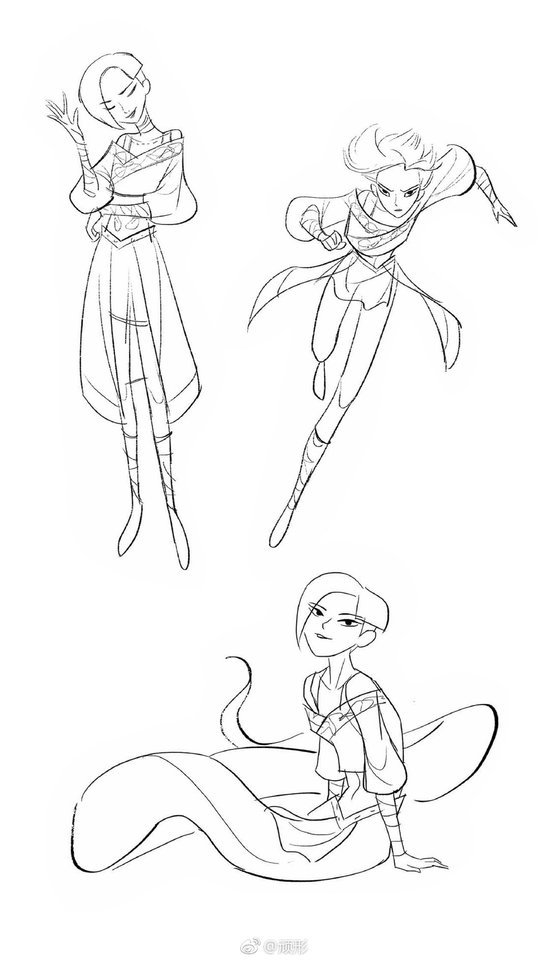
Some early concept art of Xiao Qing from Light Chaser Animation
30 notes
·
View notes
Text
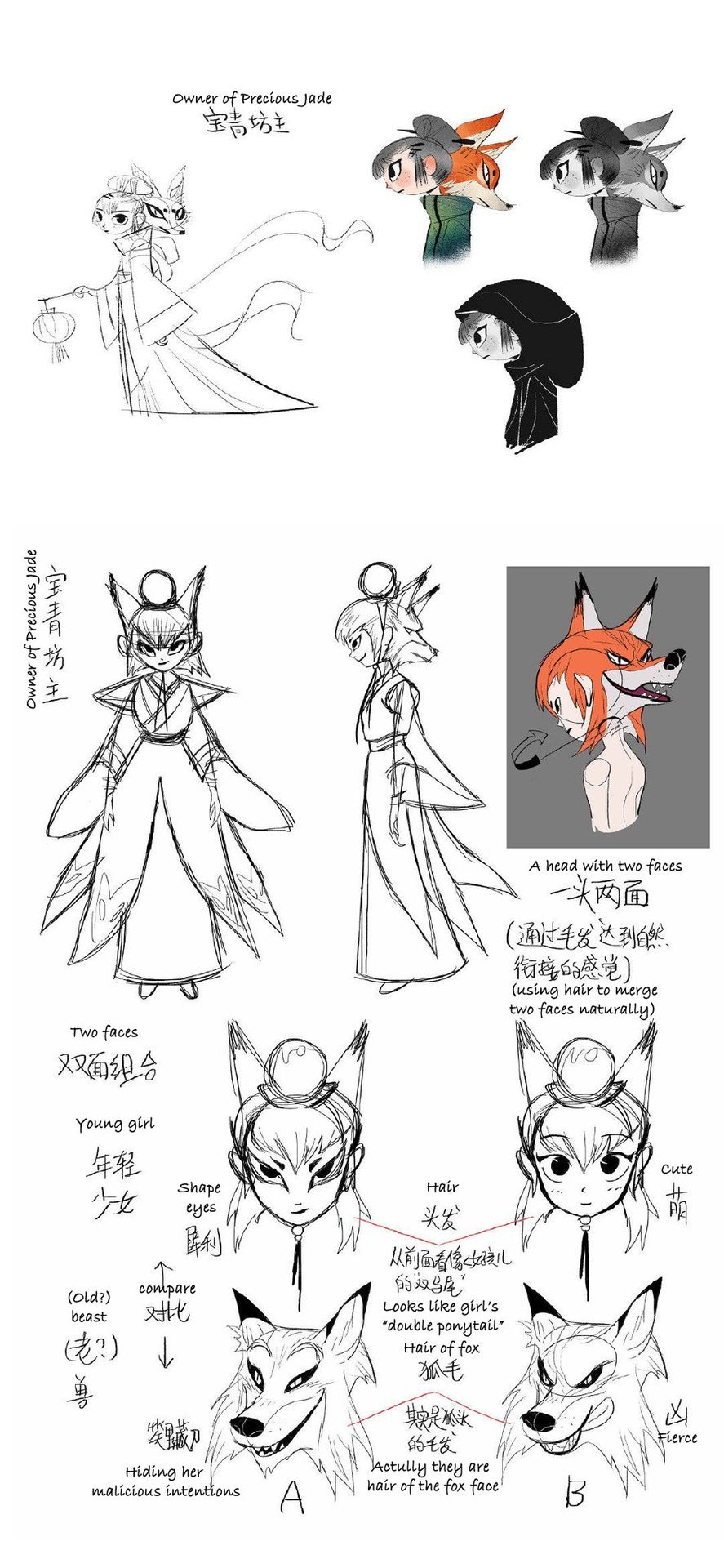
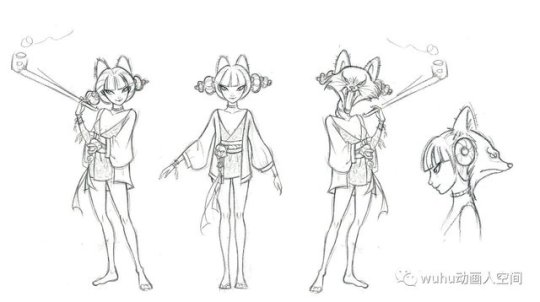
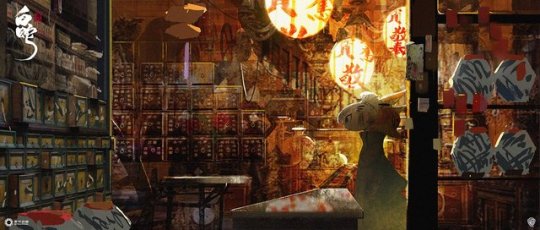
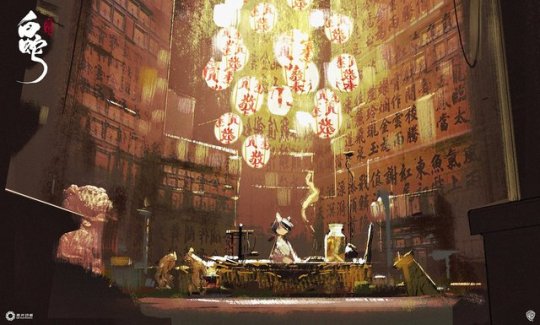
Some early concept arts of fox-fairy and her boutique from Light Chaser. Looks like the Precious Jade was originally designed as a pharmacy.
34 notes
·
View notes
Photo
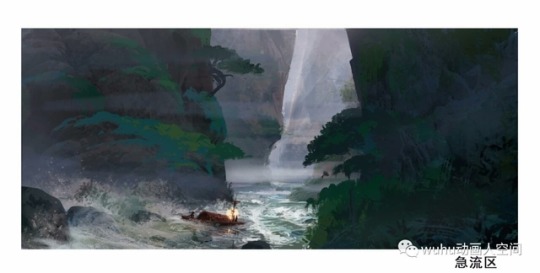
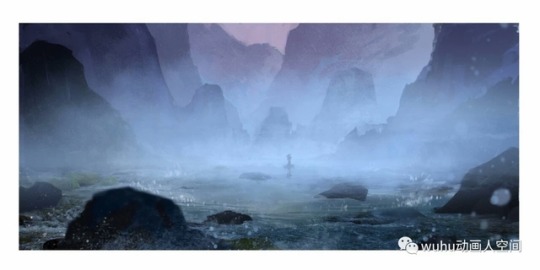
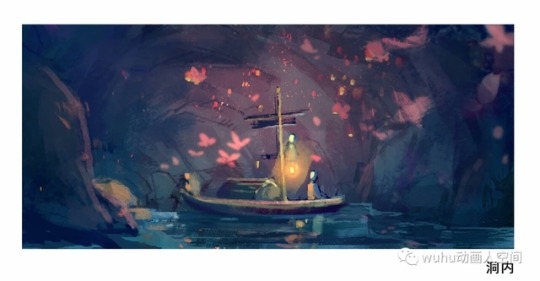
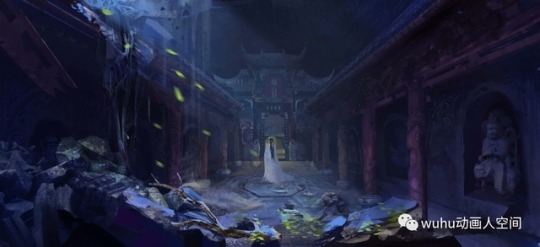

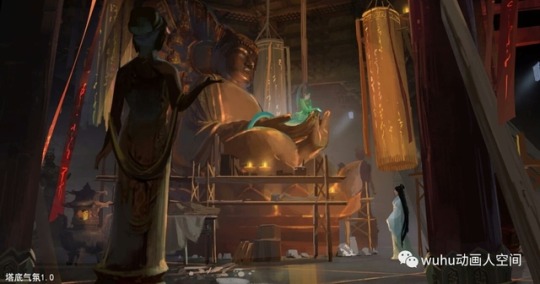
Some Concept Arts
4 notes
·
View notes
Photo
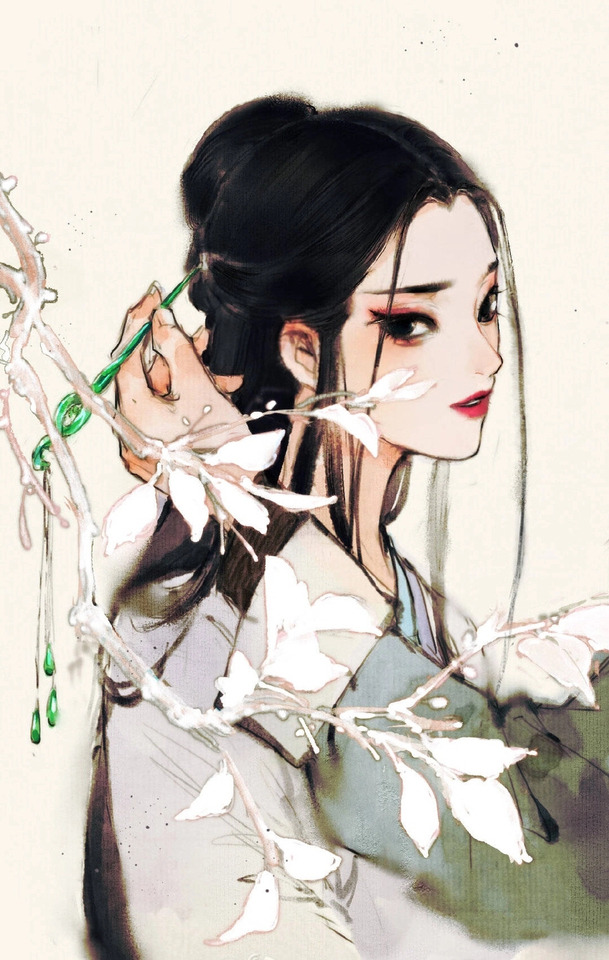
from: _煤_
want the other half...
30 notes
·
View notes
Text
Mythology behind White Snake: Afterlife and Reincarnation
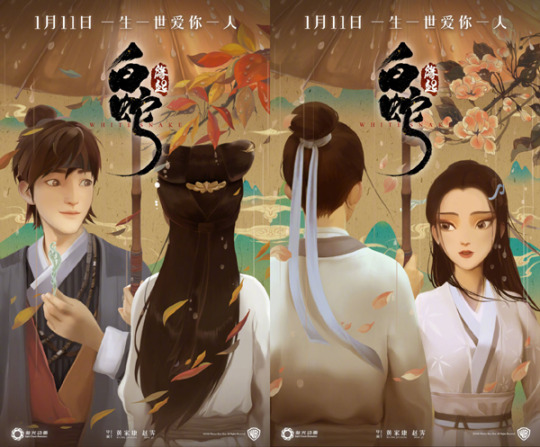
The Past Life and This Life
In fact, more than 2000 years ago, Chinese people believed that death is a one-way trip. When they died, their soul just separated from their body, and traveled to the Underworld and lived there instead. However, things changed when the idea of reincarnation was introduced along with Buddhism from ancient India to China during the Eastern Han dynasty (25 A.D.~220 A.D.).
The spread of Buddhism greatly reshaped the concepts of the Underworld and afterlife in Chinese folklore. Other native religions, such as Taoism, also absorbed the original idea of reincarnation from Buddhism and created their own version of transmigration to explain the afterlife. As the time passed by, all those things were mixed together. Eventually, during Tang dynasty (618A.D.-907A.D.) and Song dynasty (960A.D.-1279A.D.), a very complex, sometimes even paradoxical, belief system we know today took its form.
So, what is reincarnation? And how do people reincarnate?
Reincarnation means that the soul of a living being will start a new life in a different physical body after the original body biologically died.
Generally speaking, in Chinese mythology, all living beings (human, animals, plants, supernatural beings, and even deities) have their souls, and ALL souls will join the circle of reincarnation once their physical bodies die. However, since deities are immortal, their cases are a bit different. They have to separate their souls from bodies voluntarily to join the circle of reincarnation, if they want to be reborn in the mortal world.
Anyway, after a living being dies, its soul will separate from its physical body and travel to the underworld, a place is governed by a very complicated bureaucracy and ten Judges who called “阎王” (Yan-Wang, Yama, or “Kings of Underworld”). There are tons of things, such as trails and punishments, waiting for the dead in the underworld. But they are irrelevant to the topic, so let’s skip those scary parts.
Normally, most of souls will get their ticket to the afterlife assigned by the tenth Judge who is in charge of reincarnation. However, the afterlife which a soul could get largely depends on its behaviors while it was living. For example, if a human was well-behaved during the lifetime, he/she can be reborn into a good life with a long life span, otherwise, he/she can only be born into a poor life, or sometimes even be born as an animal or a plant (Don’t worry, souls of animals and plants still have their chances to be reborn as human, and it also depends on their behaviors). This might sound familiar, if you know something called “Karma” in Buddhism. Yes, as I said, this part of Chinese mythology has received a great influence from Buddhism.
Once a soul is allowed to be reborn in the mortal world, it will be sent to the last stop in the underworld — 奈河 (Nai River). It said that Nai River is the boundary between the underworld and the mortal world. Once the soul crosses it, it will be reborn in the mortal world and the new life will begin.
However, there is only one bridge on Nai River which is called 奈何桥 (Nai He Bridge, “Bridge of Resigned One”). Its name means that no matter how many regrets a soul carried or how unwilling a soul is, it has to let them go, once it is reincarnated.
To do that, before a soul crossing the bridge, it will meet an old goddess called 孟婆 (Meng Po, or “Old Lady Meng”). She will demand the soul to take a bowl of soup she cooked, the so-called 孟婆汤 (Old Lady Meng’s soup). The soup serves the same purpose as the water of Lethe in Greek mythology which will erase all memory of the dead and make them ready for reincarnation.
However, in some stories, due to mistakes or some special destinies, a soul could manage to cross the bridge without drinking the soup. Consequently, it kept all its memories in past life when it was reborn in the mortal world.
What influences does the idea of reincarnation have on Chinese mythology?
Though the idea of reincarnation was introduced by Buddhism, Chinese mythology have a slightly different opinion about it from Buddhism. While Buddhism thinks the circle of rebirths and redeaths is a suffering and the ultimate goal of reincarnation is to achieve Nirvana (the liberation from repeated rebirth), Chinese mythology prefer to consider it as a natural order and sometimes even can be a good thing. After all, if you are well-behaved during in your lifetime, you have nothing to worry about the afterlife. And if you are doing bad things, you will be punished sooner or later.
Due to this belief, destroying someone’s soul is considered to be an extremely cruel thing which means not only killing one’s life, but also destroying his/her/its opportunity to go to the afterlife. This was also why Xiao-Bai desperately want to save Xuan’s soul at the very end, even at cost of her human form. If Xuan’s soul was destroyed, he would lost his opportunity to reincarnate.
More importantly, reincarnation means that you will still have a chance to meet those who are important to you again after you and/or they die. Even though reincarnation will erase all your memories, Chinese mythology believes that some strong bonds between souls can still be passed down form one life to another without memories, such as love, family relationship, friendship, hatred, sometimes even financial debts.
The so-called 前世姻缘(Love from a past life) commonly mentioned in traditional romance stories is a good example of this belief. In those stories, people who were married couples, or in love but couldn’t be together, in a past life would often fell in love without particular reasons when they met in another life. Similarly, love at first sight sometimes were also interpreted as an “inherited” love from a past life. Just like the last scene in White Snake movie, the reincarnated Xuan told Xiao-Bai that she looked very familiar which means that his soul still kept the love for Xiao-Bai, even though all his memories were lost.
227 notes
·
View notes
Photo
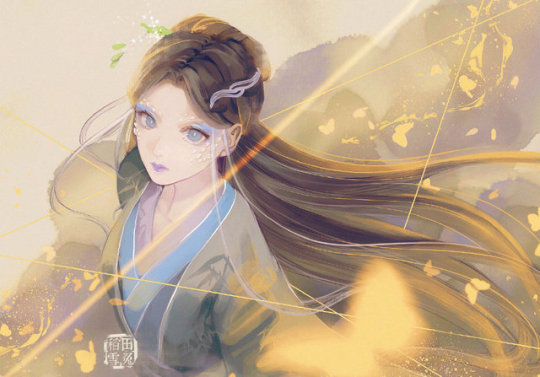
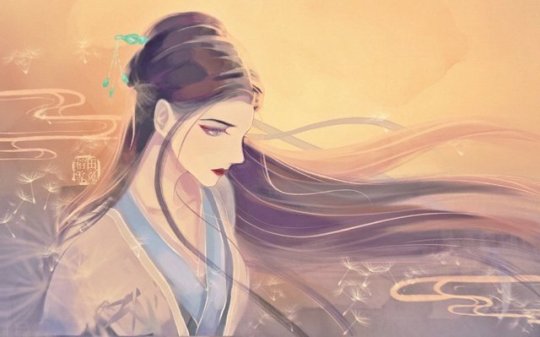
from 稻田雪兔
20 notes
·
View notes
Text
Mythology behind White Snake: Yao/Demon
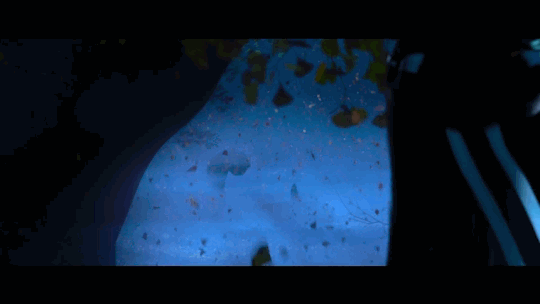
妖(Yao) or 妖怪(Yao-guai), 妖精(Yao-jing), in a narrow sense, is a category of supernatural beings in Chinese folktales. It generally means “monster with magical powers”. Although it can be roughly translated into “demon” or “spirit”, they are actually very different from the hell-bound beings or non-physical entities.
So, what is a Yao?
Simply speaking, Chinese mythology believes that an animal or a plant, sometimes even a lifeless object, will become self-aware under rare circumstances, such as when it has lived for a very long time or received other magical being’s help. Consequently, it will no longer be considered as a “natural being” but as a Yao. This is the first stage of a Yao’s life, called 成精 (Cheng Jing or “Become a spirit/monster”).
At this point, a Yao is basically a very intelligent animal (or a plant). Also it might take few years to develop the ability to speak. Nothing scary, right?
However, once it is self-ware, a Yao will begin to cultivate some sort of magical energy inside its body which allow it to perform some supernatural abilities (just think it as the mana points you used in video games) and greatly extend its lifespan. This process is called 修炼 (Xiu-lian or “Cultivation” / “Practicing”). From now on, things become a bit tricky.
The most common ways of cultivation are meditation and practicing mystic arts (if there is someone or something who can teach them). BUT, it said that a Yao can also try to draw life force from human and other living things, even other Yao, to accelerate this process. (or sometimes, they just simply want to eat human without particular reasons).
During its cultivation, the magical energy inside it will slowly change a Yao’s body and appearance, which usually makes it more and more like a human. Eventually, after hundreds of years, it will gain a complete human form. And this is the second stage of a Yao’s life, called 成人(Cheng Ren or “Become a Human”).
Most of Yao who appeared in Chinese folktales or mystery stories are around this stage. In an anthology of mystery stories finished in the Eastern Jin dynasty (317A.D.-420A.D.), there is a description about how a fox become a fox Yao. It said:
“When a fox is 50 years old, it can turn itself into a woman. When it’s 100 years old, it can turn itself into a beauty or a magician, and can also disguise as a woman’s husband to have sex with her. A fox at this age is good at charming people and making its victims disoriented. Once a fox is a thousand years old, it can communicate with Heaven, that’s so-called ‘Heavenly fox’ (or fox god).”
At this stage, a Yao is a powerful supernatural being with magic abilities and can transform between his/her human form and original animal/plant form at will. However, some tales believe that there are ways to force a Yao to turn back into his/her original form, such as in the Tale of Lady White Snake, Lady White Snake turned into a snake when she was poisoned by realgar wines. On the other hand, if a Yao loses or consumes too much magical energy, he/she will lose their magic abilities, including the ability to shapeshift, and also turn back into his/her original form, sometimes even faces the risk of death.
There is also a third, very rare stage of a Yao’s life called 成仙(Cheng Xian or “Become an Immortal/god” / “transcendence”), if it continues its cultivation after gaining the human form. But it’s a complicated topic, I may give an another post to talk about that.
What are the roles of Yao in stories?
In Chinese mythology, Yao are normally described as eccentric outsiders or potential dangers to the human world to say the least. They are much more powerful than ordinary people and, unfortunately, have very different moral senses, or even don’t have any moral senses, due to their origins and life experiences. In many stories, even a kind-hearted Yao, such as Lady White Snake or Yin Ning the half-fox fairy, would cause disaster or harm other people without hesitation, if he/she thinks it’s necessary. Hence, the relationship, especially love relationship, between a Yao and a human is at least highly controversial, if not totally forbidden.
However, sometimes ancient novelists would also use Yao as a foil to mind readers that human sometimes can be more monstrous and dangerous than Yao. And in those stories, Yao actually became the victims of human’s greed.
As a result, though Yao are often imprisoned or slayed by heroes or Taoists or Buddhist monks at the end of stories, their roles in folktales stories are very different from each other. In some stories, they are villains who harm people or bring disaster to human society; in some stories, they are eccentric hermits who like testing people and appreciate brave ones; in other stories, especially love stories, they can also be heroes and heroines who bravely challenge the rigid social rules and injustices.
424 notes
·
View notes
Text
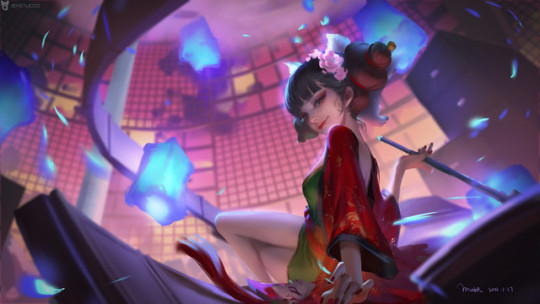
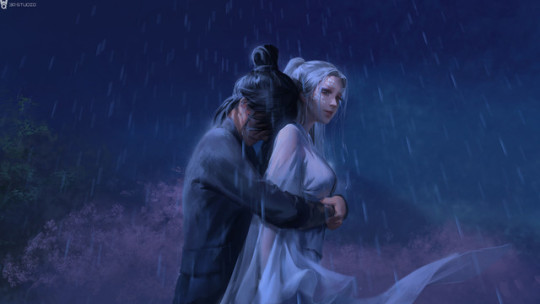
Form li miao ()
21 notes
·
View notes
Photo
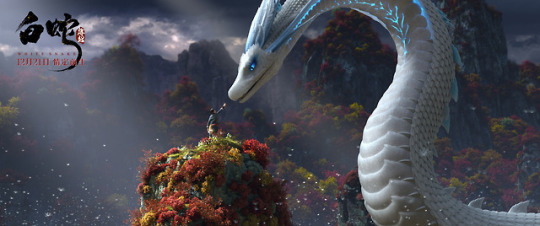
3 notes
·
View notes
Photo
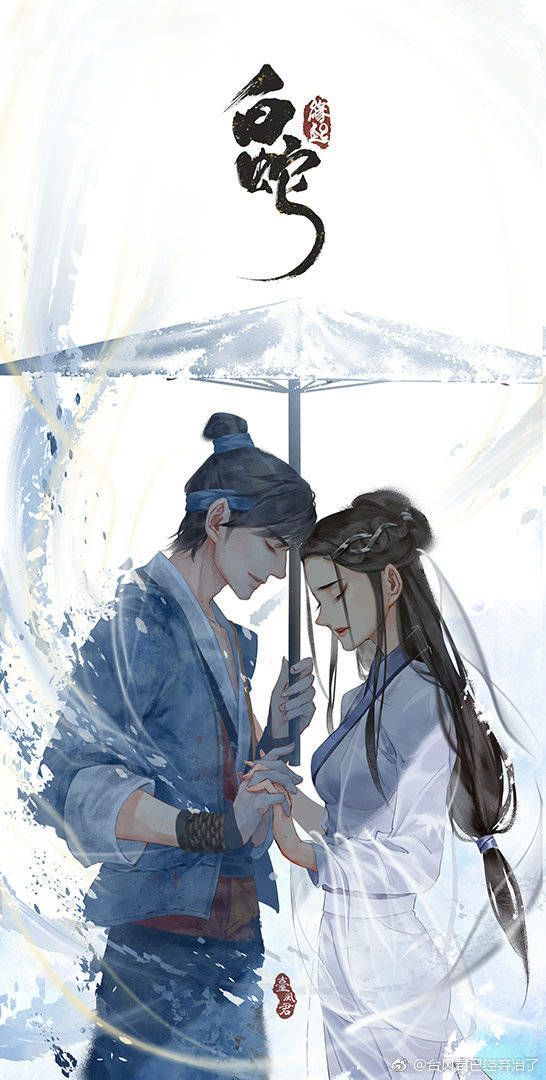
From 台风君已经弃治了
7 notes
·
View notes
Text
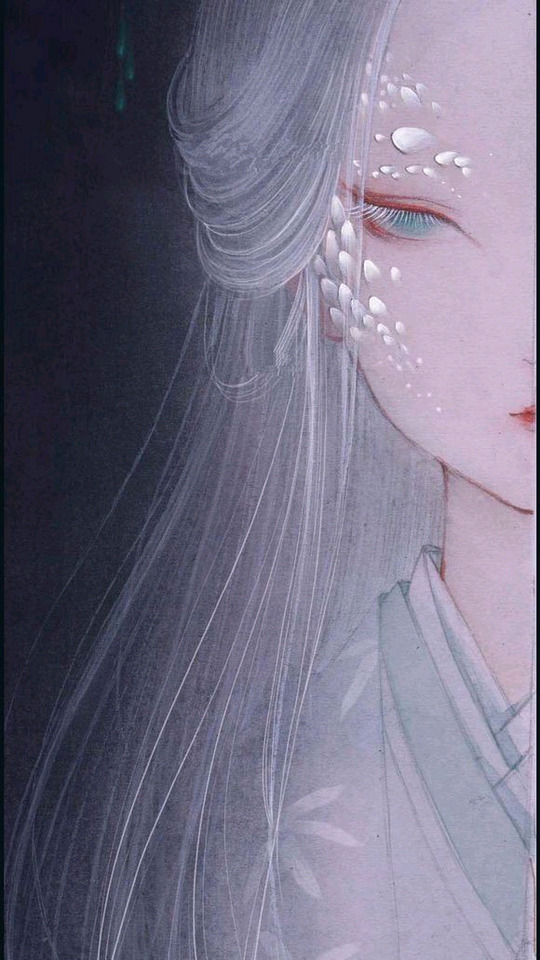
32 notes
·
View notes
